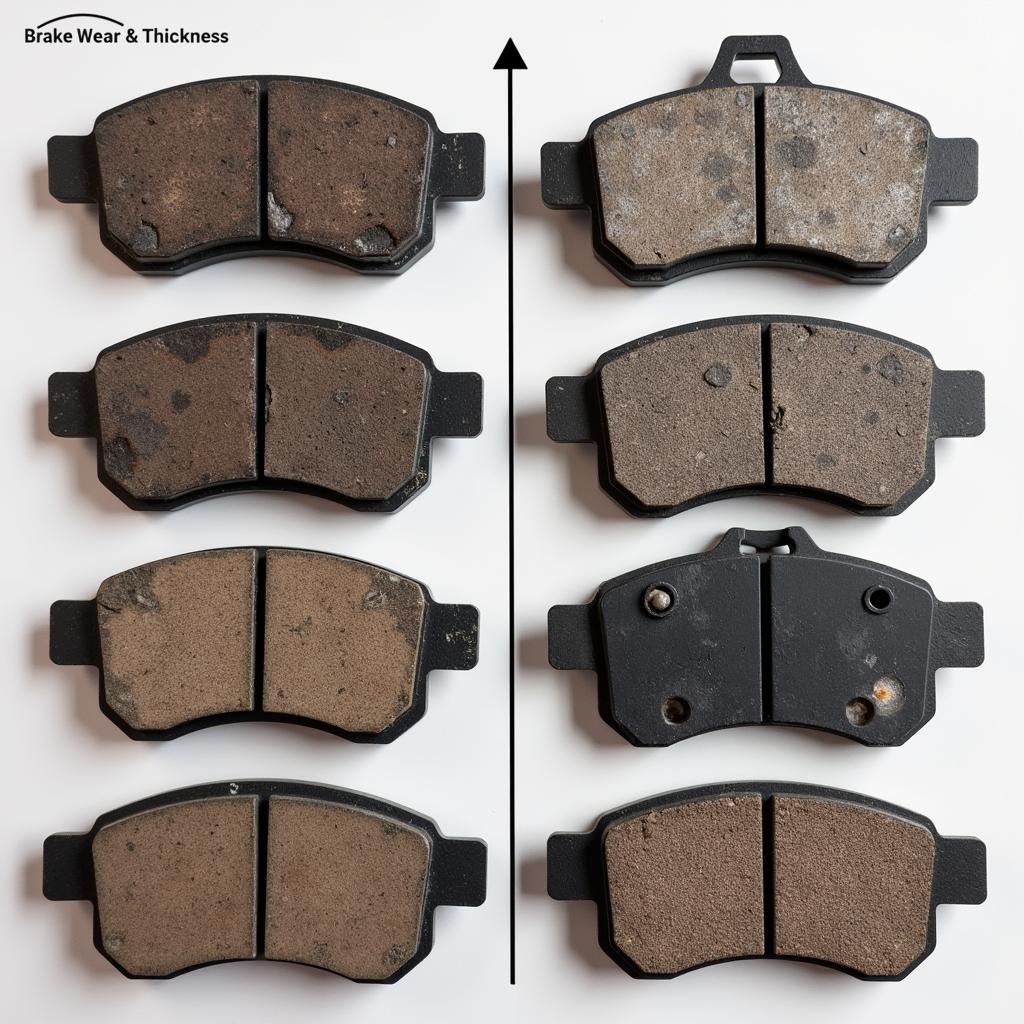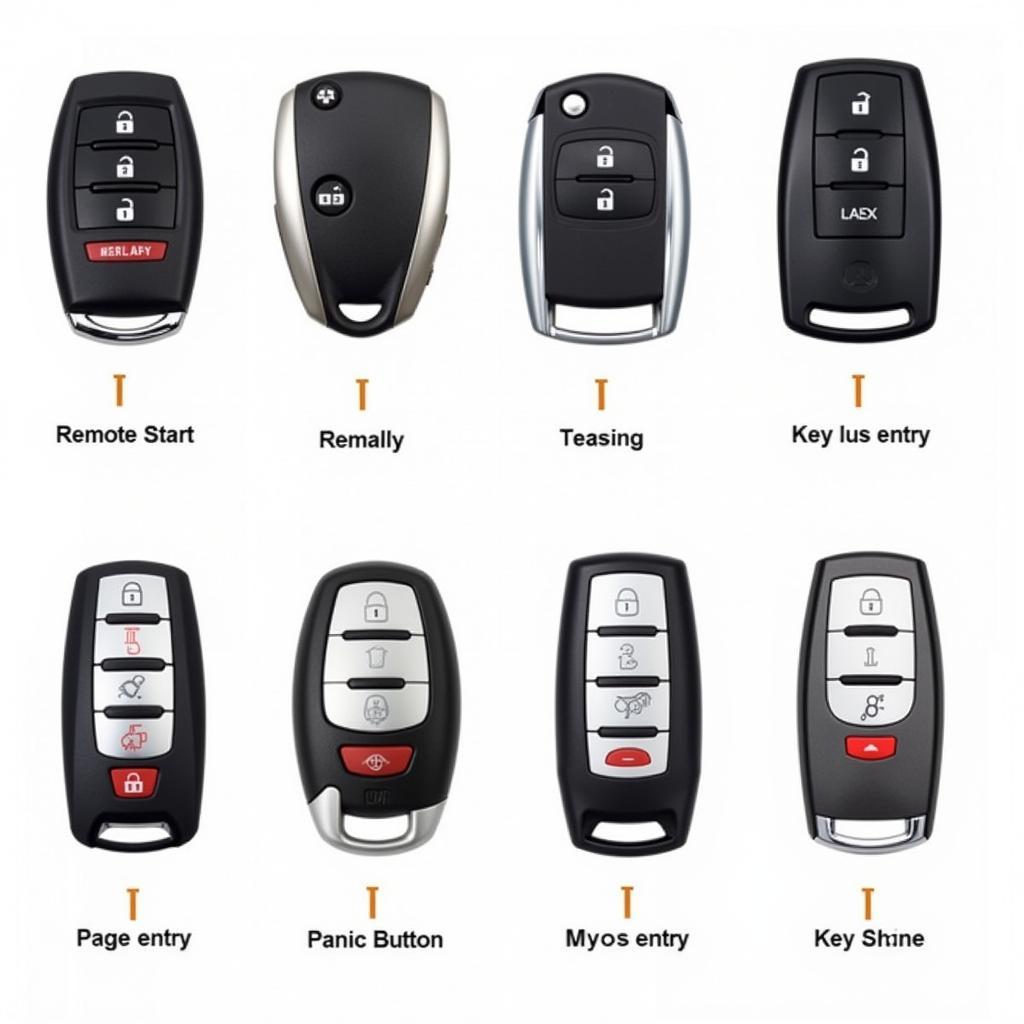The brake warning light on your 1999 Ford F-150 is a crucial safety feature, illuminating on your dashboard to alert you of potential issues within the braking system. Ignoring this warning could lead to decreased braking performance and potentially dangerous driving situations. This comprehensive guide will delve into the common causes behind a 1999 Ford F-150 brake warning light and provide you with potential solutions to get you back on the road safely.
Understanding Your F-150’s Brake Warning System
Before we dive into the specifics, it’s important to understand how your F-150’s brake warning system operates. The system relies on several components, including:
- Brake Fluid Level Sensor: This sensor monitors the brake fluid level in the master cylinder. If the fluid drops below a certain level, it triggers the warning light.
- Parking Brake Switch: Engaging the parking brake activates this switch, turning on the warning light. This serves as a reminder to disengage the parking brake before driving.
- ABS Control Module: If your F-150 is equipped with an Anti-lock Braking System (ABS), the ABS control module continuously monitors the system’s sensors and components. Any detected malfunction will trigger the brake warning light.
Common Causes of a 1999 Ford F-150 Brake Warning Light
Now, let’s explore the common culprits behind that illuminated brake warning light:
1. Low Brake Fluid
This is the most frequent cause. Brake fluid is essential for transmitting force from your foot on the brake pedal to the wheels, enabling effective braking.
Possible reasons for low brake fluid:
- Worn Brake Pads or Shoes: As brake pads wear down, the brake calipers need more fluid to function correctly, leading to a lower fluid level.
- Brake Fluid Leak: A leak anywhere in the brake system, such as brake lines, hoses, or calipers, can significantly reduce brake fluid and illuminate the warning light.
Troubleshooting Low Brake Fluid:
- Check the brake fluid level. Park your F-150 on a level surface and locate the brake fluid reservoir. The reservoir is typically translucent, allowing you to visually inspect the fluid level.
- Add brake fluid if necessary. If the level is low, carefully add the correct type of brake fluid as specified in your owner’s manual.
- Inspect for leaks. If you suspect a leak, carefully examine the area around the master cylinder, brake lines, hoses, and calipers for any signs of fluid.
 Brake Fluid Reservoir Location
Brake Fluid Reservoir Location
Important: If you need to add brake fluid frequently or suspect a leak, it’s crucial to have your brake system inspected by a qualified mechanic immediately. Driving with a brake fluid leak is extremely dangerous.
2. Worn Brake Pads
Brake pads are designed to wear down over time. When they become too thin, the brake warning light will illuminate.
Signs of Worn Brake Pads:
- Squealing or grinding noises when braking.
- Vibrations felt through the brake pedal.
- Vehicle pulling to one side when braking.
Troubleshooting Worn Brake Pads:
Driving with worn brake pads is unsafe and can damage your rotors. If you suspect your brake pads are worn, it’s best to have them inspected and replaced by a qualified mechanic.
 Worn Brake Pads Comparison
Worn Brake Pads Comparison
3. Faulty Parking Brake Switch
If the parking brake switch malfunctions, it can send a false signal, causing the brake warning light to stay on even when the parking brake is disengaged.
Troubleshooting a Faulty Parking Brake Switch:
- Ensure the parking brake is fully released. Double-check that the parking brake lever is completely down.
- Inspect the parking brake switch. Locate the switch, usually near the parking brake lever, and check for any visible damage or loose connections.
- Test the switch. If you have a multimeter, you can test the switch for continuity.
4. ABS Issues
If your 1999 Ford F-150 has ABS, a problem with the system, such as a faulty wheel speed sensor or a malfunctioning ABS module, can trigger the brake warning light.
Troubleshooting ABS Issues:
Diagnosing ABS problems typically requires specialized diagnostic equipment. It’s recommended to have your F-150 inspected by a qualified mechanic who can read the ABS codes and pinpoint the issue.
When to Seek Professional Help
While some causes of a brake warning light can be addressed with basic troubleshooting, it’s essential to seek professional help if:
- You suspect a brake fluid leak.
- You’re uncomfortable working on your vehicle’s brake system.
- The brake warning light remains on after addressing the common causes.
Conclusion
The brake warning light in your 1999 Ford F-150 is a critical safety feature you should never ignore. By understanding the common causes and utilizing the troubleshooting tips outlined in this guide, you can take the necessary steps to address the issue and ensure your F-150’s braking system operates safely and effectively. Remember, when in doubt, consult with a qualified mechanic to diagnose and repair any brake-related problems.

